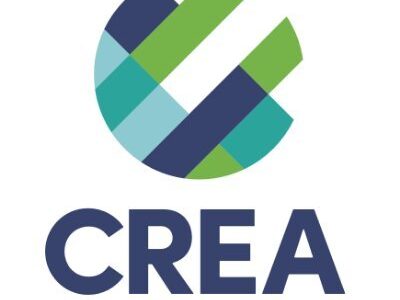California releases proposed rule to implement streamlining of environmental review for new California infill developments
As part of an effort to create more walkable, livable communities that reduce vehicle miles traveled and the greenhouse gas emissions that those vehicles generate, California is removing barriers to infill development. Our governor and legislature are trying to create communities of homes and retail businesses that are closer together and closer to public transit. These are laudable goals. (See this report by Ethan Elkind from a few years ago, part of the UCLA Law/Berkeley Law California Climate Change and Business Research Initiative, for more explanation.) There may be other environmental trade-offs, though, and striking the proper balance will be difficult. A rulemaking process that implements a new law passed last year, SB 226, will be crucial in setting the stage for this initiative.
A couple of weeks ago, the California Governor’s Office of Planning and Research (OPR) submitted to the California Natural Resources Agency its proposed guidelines and performance standards to implement SB 226, the 2011 law that will provide a streamlined process for environmental review of infill development. This submission represents the first step in a formal rulemaking process that will end with the publication of final guidelines and performance standards by the end of 2012.
OPR has a webpage that details its proposal; the webpage includes earlier drafts and public comments on those drafts, reflecting a process that has been a model for transparency, incorporating meaningful, early public input even though this input was not required by law. The formal rulemaking process that just began has a website, too, which presumably will be the focal point for future action (and has a form to submit to get on the email list for future actions), though the website is not yet up to date.
My colleagues have blogged about this law before: For example, Ethan Elkind discussed the new law when it first passed the legislature. So did Rick Frank. And UCLA Law and Berkeley Law have assisted OPR with its development of the proposed guidelines, by convening two expert meetings to provide a wide range of input to OPR. (Ethan drafted a paper summarizing the first of those meetings.)
Some background: CEQA requires government agencies to study and disclose the environmental impacts of their decisions, and to mitigate those impacts to the extent feasible, before they make decisions that significantly affect the environment. CEQA review has led to some great successes in environmental protection, through developing information, incorporating public input, requiring mitigation of impacts, and providing incentives for local governments and developers to improve the environment. On the other hand, land developers and local governments complain that CEQA creates expense, delay, and uncertainty, especially because of the citizen lawsuits that CEQA authorizes, which allow anyone to allege that an agency’s environmental review may be inadequate.
In some areas of project development, environmental review can pit environmental advocates against one another. For example, building of infill projects, which increase local density and can be used to create more walkable, livable, transit-friendly neighborhoods while reducing vehicle miles traveled (and thus reducing the greenhouse gas emissions that cause climate change), can often create environmental benefits. At the same time, those projects might still create localized environmental and public health impacts.
SB 226 was intended to streamline CEQA review of infill developments. As my colleague Ethan Elkind has written: “Basically, the bill allows qualified infill projects that meet new statewide performance standards to more easily avoid environmental review for impacts that local governments have already analyzed in their prior planning efforts or have mitigated through local development standards. ” Agencies will still have to develop a streamlined Environmental Impact Statement addressing new impacts. In theory, at least, this would allow cities to plan in advance for infill development, do environmental review and mitigation under CEQA at a citywide or neighborhood scale, and then not have to duplicate that review when individual projects are proposed unless there are new or different impacts from those contemplated in the citywide or neighborhood plan.
But the devil is in the details. To qualify for streamlining, infill projects have to meet “performance standards” that aren’t spelled out in the statute. And they also have to meet the other requirements of the law, many of which are vague. That’s where this year’s guideline and performance standard development process comes in: the standards and guidelines provide the important substantive and procedural details that define the scope of the projects eligible for streamlining. If the standards and guidelines are too lax, projects with little or no environmental benefit might qualify, or the environmental review itself might ignore important impacts to public health. On the other hand, if the standards and guidelines are too strict or too difficult to follow, local governments may not make use of the exemption, meaning that the law wouldn’t accomplish its purpose to make infill development easier.
Some attorneys representing developers have expressed deep skepticism of the new law’s ability to streamline projects successfully. For example, Holland & Knight’s Jennifer Hernandez, who has been a critic of the new law, has created a flowchart that dramatically suggests that the new law is too complex to implement and will rarely lead public agencies to utilize the streamlining provisions. On the other hand, some environmental advocacy groups are worried that the law will unduly limit CEQA’s ability to protect public health and the environment. (See these two letters from Sierra Club’s Matt Vespa for examples of those arguments. See also this study by the Pacific Institute that found that “unless health-protective measures are incorporated into infill and transit-oriented development policies, [infill] development may actually exacerbate the adverse impacts of freight transport on community health and quality of life.” )
All in all, I believe that OPR staff has done an admirable job trying to balance the various interests while staying faithful to the law. It is not clear to me, however, whether the law itself strikes the right balance, or what will actually happen once it is implemented.







Reader Comments